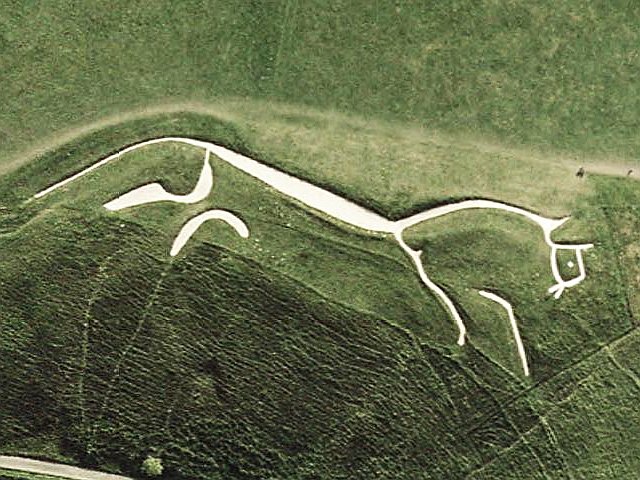Lollingdon Downs on:
[Wikipedia]
[Google]
[Amazon]
 The Berkshire Downs are a range of chalk downland hills in South east England split between the counties of
The Berkshire Downs are a range of chalk downland hills in South east England split between the counties of
Royal Berkshire History website
/ref> In 1915, after a brief stint as a hospital orderly at the British hospital for French soldiers in Haute-Marne, John Masefield moved to his country retreat at Lollingdon Farm. The setting at the foot of the Downs - Masefield's "Lollingdon Downs" would inspire a number of poems and sonnets.
 The Berkshire Downs are a range of chalk downland hills in South east England split between the counties of
The Berkshire Downs are a range of chalk downland hills in South east England split between the counties of Berkshire
Berkshire ( ; in the 17th century sometimes spelt phonetically as Barkeshire; abbreviated Berks.) is a historic county in South East England. One of the home counties, Berkshire was recognised by Queen Elizabeth II as the Royal County of Berk ...
and Oxfordshire
Oxfordshire is a ceremonial and non-metropolitan county in the north west of South East England. It is a mainly rural county, with its largest settlement being the city of Oxford. The county is a centre of research and development, primarily ...
. They are part of the North Wessex Downs
The North Wessex Downs Area of Outstanding Natural Beauty (AONB) is located in the English counties of Berkshire, Hampshire, Oxfordshire and Wiltshire. The name ''North Wessex Downs'' is not a traditional one, the area covered being better kno ...
Area of Outstanding Natural Beauty. The western parts of the downs are also known as the Lambourn Downs.
Geography
The Berkshire Downs run east–west, with theirscarp
Scarp may refer to:
Landforms and geology
* Cliff, a significant vertical, or near vertical, rock exposure
* Escarpment, a steep slope or long rock that occurs from erosion or faulting and separates two relatively level areas of differing elevatio ...
slope facing north into the Vale of White Horse and their dip slope bounded by the course of the River Kennet. Geologically they are continuous with the Marlborough Downs to the west and the Chilterns to the east. In the east they are divided from the Chilterns by Goring Gap on the River Thames. In the west their boundary is generally taken to be the border between Berkshire and Wiltshire, although the downs in Wiltshire between the Berkshire border and the valley of the River Og are sometimes considered to be part of the Berkshire Downs.
History
English downland has attracted human habitation since prehistoric times. The ancient track known as the Ridgeway runs along the Berkshire Downs. Prehistoric sites in the Downs include Wayland's Smithy ( Neolithic), numerous tumuli (Neolithic or Bronze Age), Uffington White Horse (Bronze Age), Liddington Castle and Uffington Castle (Bronze Age and Iron Age), andSegsbury Camp
Segsbury Camp or Segsbury Castle is an Iron Age hillfort on the crest of the Berkshire Downs, near the Ridgeway above Wantage, in the Vale of White Horse district of Oxfordshire, England. It is in Letcombe Regis civil parish and is also called ...
and Grim's Ditch (Iron Age).
It is generally thought that in Anglo-Saxon
The Anglo-Saxons were a Cultural identity, cultural group who inhabited England in the Early Middle Ages. They traced their origins to settlers who came to Britain from mainland Europe in the 5th century. However, the ethnogenesis of the Anglo- ...
times the downs were known as ''Æscesdūn'' or Ashdown, and that it was here that the Battle of Ashdown was fought in 871./ref> In 1915, after a brief stint as a hospital orderly at the British hospital for French soldiers in Haute-Marne, John Masefield moved to his country retreat at Lollingdon Farm. The setting at the foot of the Downs - Masefield's "Lollingdon Downs" would inspire a number of poems and sonnets.
Economy
Downland pasture is firm and well drained, suited to grazing sheep and grazing and training horses.Horse racing
Horse racing is an equestrian performance sport, typically involving two or more horses ridden by jockeys (or sometimes driven without riders) over a set distance for competition. It is one of the most ancient of all sports, as its basic p ...
is a major business in the area, with much of the downs covered with training areas, and stables centred on the village of Lambourn.
Railway links
The Berkshire Downs can be accessed from various cities via theGreat Western Main Line
The Great Western Main Line (GWML) is a main line railway in England that runs westwards from London Paddington to . It connects to other main lines such as those from Reading to Penzance and Swindon to Swansea. Opened in 1841, it was the or ...
and its current single operator runs localised stopping trains as well as the high-speed trains along the Vale of White Horse calling at major stops and . From to trains run along the Reading to Taunton Line in the River Kennet Valley to reach Devon on the quickest route from London. From there are the scenic Thames Valley stations of , Goring & Streatley and (linked to the Cholsey and Wallingford Railway).
References
{{Authority control Hills of Berkshire Hills of Oxfordshire Hills of Wiltshire